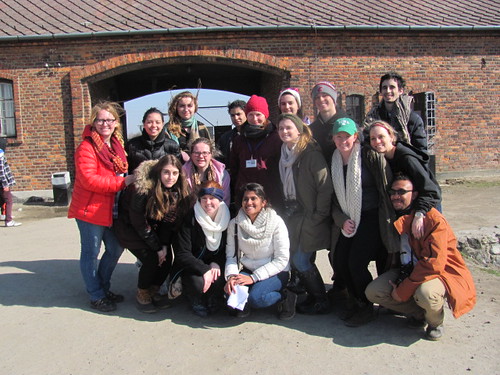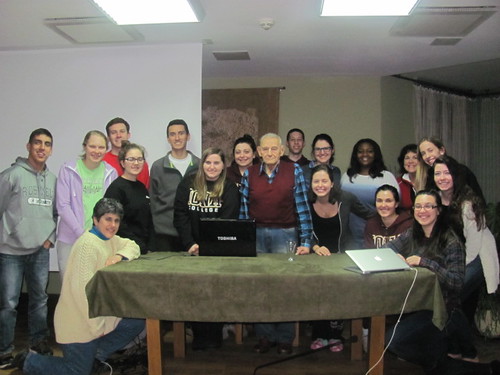 |
| Attending a Jewish Shabbat Service |
All I can say is wow. This past week
has been a long journey and amazing opportunity. I’m sitting here reflecting on the week and I
can’t believe how much I’ve learned and saw. I also can’t believe that in a few
hours I will be on the plane back home. Today was a good end to the trip. We
went to the city of Krakow, had a walking tour of the old Jewish neighborhood
and saw the location of the former Jewish Ghetto, and Schindler’s factory. We
ended our tour in the center of the city, Market Square (one of my favorite
places in Krakow). We spent a few hours walking around and shopping there, it
was a lot of fun.
What
really made a great end to the day was when we attended a Jewish Shabbat
service with “BEIT Krakow”. The service took place in the Jewish Holocaust
museum. I feel like it couldn’t have been a better ending for this trip. We’ve
spent all week learning about Judaism in Europe, specifically Poland and the
horrors of the Holocaust. The more and more people we talked to, it became clearer
that there is such a tiny portion of Jewish people living in Poland today. Many
towns and villages have no Jewish community at all. To have the ability to
attend a service and meet a growing Jewish community was inspirational. The
service we attended in the museum was small but it was made up of a younger
generation which gives hope for the future of the Jewish population in Poland.
Also, the fact that this service took place in a Holocaust museum was symbolic.
It serves as a reminder of the past but also motivation for the future.
Basically, after hearing all the devastation the Shoa has done to the Jewish people,
to witness that they’re not gone and Hitler did not succeed, was a happy ending
to the trip. I’m not sure if this is my last post or not but if so I will end
with a very important quote. “Those who forget the past are destined to repeat
it”. With that said, I will use this opportunity I had to be a part of a better
future. S































































